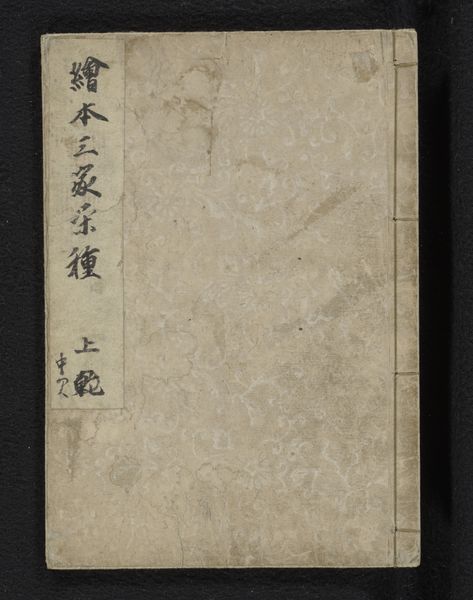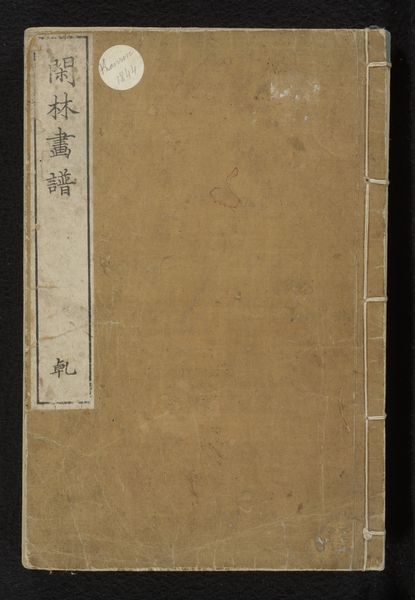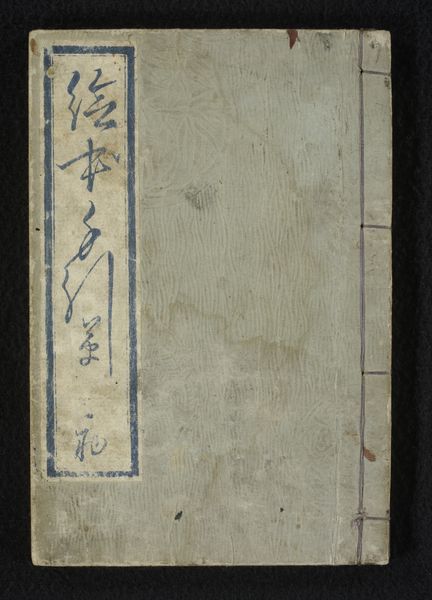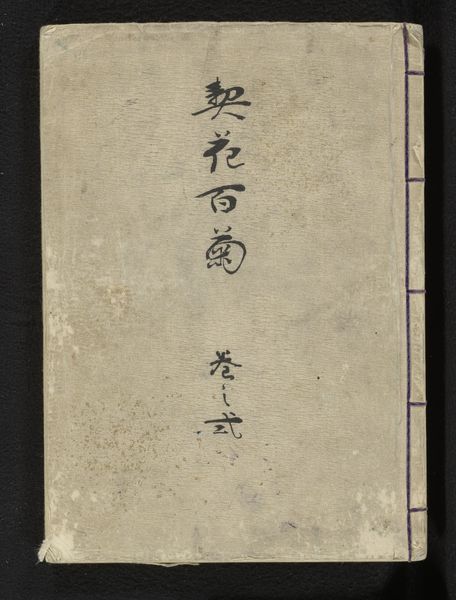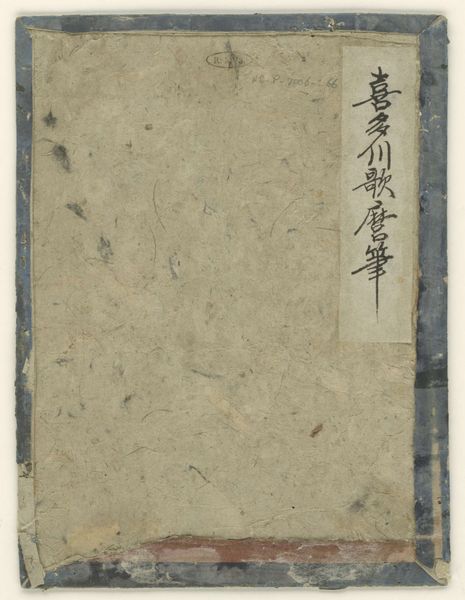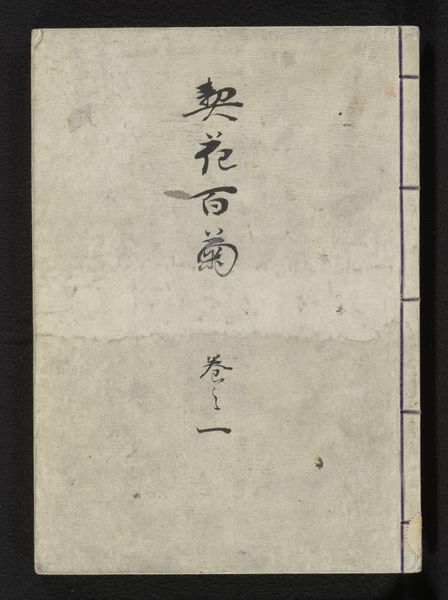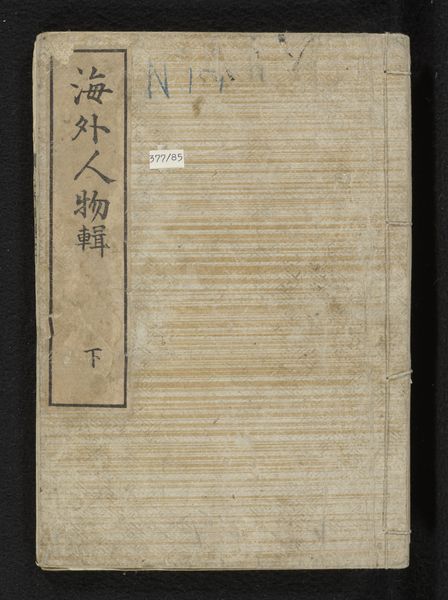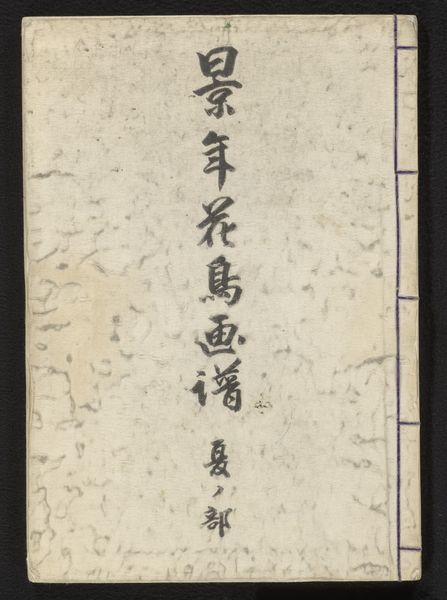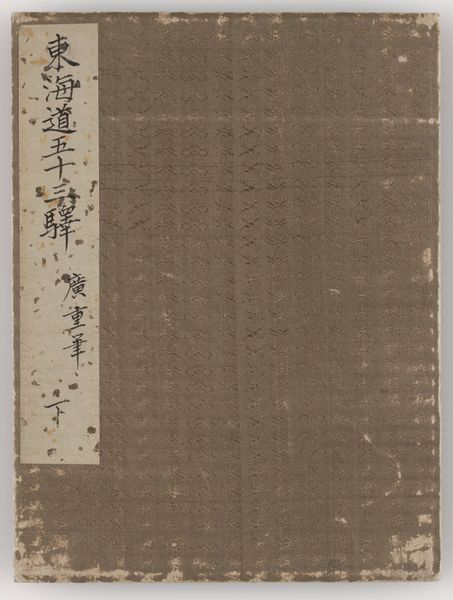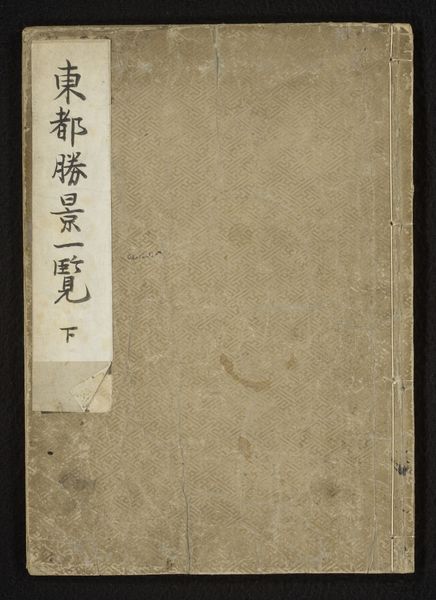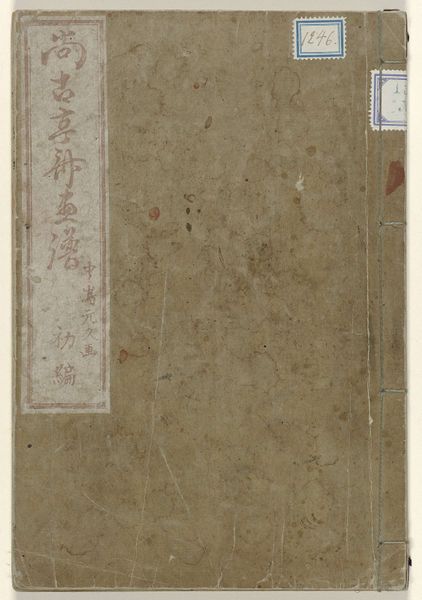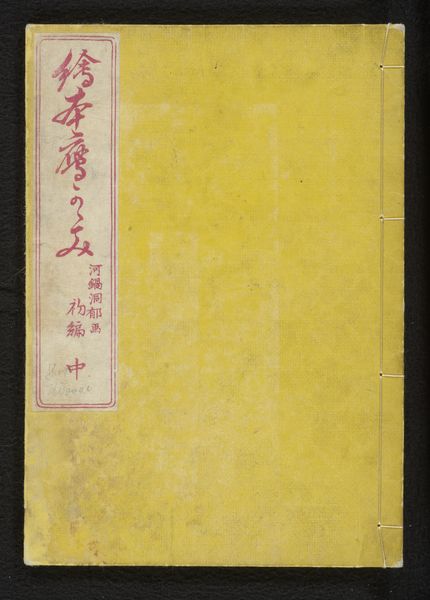
print, paper, woodblock-print
# print
#
asian-art
#
ukiyo-e
#
paper
#
woodblock-print
Dimensions: height 252 mm, width 185 mm
Copyright: Rijks Museum: Open Domain
Curator: Well, hello there! Gosh, at first glance, this looks like... maybe a slightly foxed map, or the cover to a really old adventure novel. You know, something you’d find tucked away in a dusty attic. Editor: What you are perceiving as old is the "Album met Japanse prenten - linker deel" dating from 1853 to 1856, showcasing the artistry of Utagawa Kunisada. It is crafted from paper, as a woodblock print, and stands as a compelling example of ukiyo-e tradition. The left part of a larger album now in the collection of the Rijksmuseum. Curator: "Ukiyo-e tradition!" Oh, you always bring the smarts! See, I just thought, "vintage!" But seriously, the texture is amazing. You can almost feel the age in those horizontal lines. Is that deliberate, the simplicity of it? Editor: It could certainly be viewed as an aesthetic decision deeply interwoven with socio-political contexts. Ukiyo-e developed in the Edo period in Japan when there was burgeoning urban culture. Themes focused on daily life and the aesthetic pleasures available during this time. These images weren’t necessarily about the artist’s inner self but, rather, representations of external social environments and people's relation to each other. Curator: Relation… Ah, yes. Like seeing a faded snapshot from someone's life—there's something intensely personal even when it’s seemingly anonymous. Though the piece appears aged, it strikes me that we might view it as a time portal rather than a decaying surface, don’t you think? Perhaps that plain, almost austere cover, promised vivid stories and bright colors waiting to explode inside? I feel almost greedy for whatever might be hidden behind those pages. Editor: You're right to point out the hidden nature of albums. Often, access was controlled and reflective of class status—not to mention, perhaps gender in this time period. This creates hierarchies where some were privileged in viewership while others were left out of enjoying ukiyo-e. Curator: Ah, so the 'unveiling' isn't just about seeing art; it's a symbolic access to power. Fascinating! Editor: Precisely. Now, as we conclude, it is not just appreciating its beauty or artistry—it becomes a study of who held the keys and whose stories remained unheard within this culture. Curator: Gosh! So, maybe the adventure isn’t on the pages, but in realizing who gets to turn them... And suddenly, my dusty attic novel has morphed into a critical quest!
Comments
No comments
Be the first to comment and join the conversation on the ultimate creative platform.
